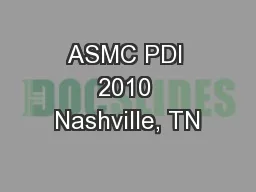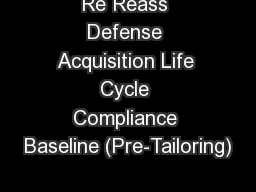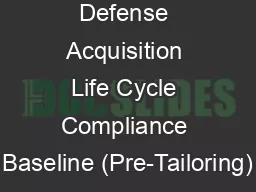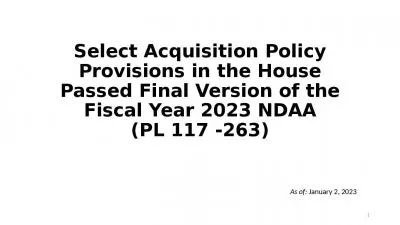PPT-Defense Acquisition University
Author : mitsue-stanley | Published Date : 2020-01-06
Defense Acquisition University Day of Cyber 26 June 2019 A Dialogue A Day Without Cyber Dr Daniel Rags Ragsdale Assistant Director for Cyber Office of the Undersecretary
Presentation Embed Code
Download Presentation
Download Presentation The PPT/PDF document "Defense Acquisition University" is the property of its rightful owner. Permission is granted to download and print the materials on this website for personal, non-commercial use only, and to display it on your personal computer provided you do not modify the materials and that you retain all copyright notices contained in the materials. By downloading content from our website, you accept the terms of this agreement.
Defense Acquisition University: Transcript
Download Rules Of Document
"Defense Acquisition University"The content belongs to its owner. You may download and print it for personal use, without modification, and keep all copyright notices. By downloading, you agree to these terms.
Related Documents

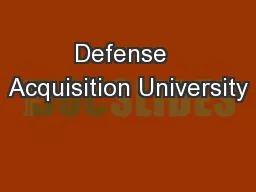





![[] Acquisition Team](https://thumbs.docslides.com/468971/acquisition-team.jpg)

